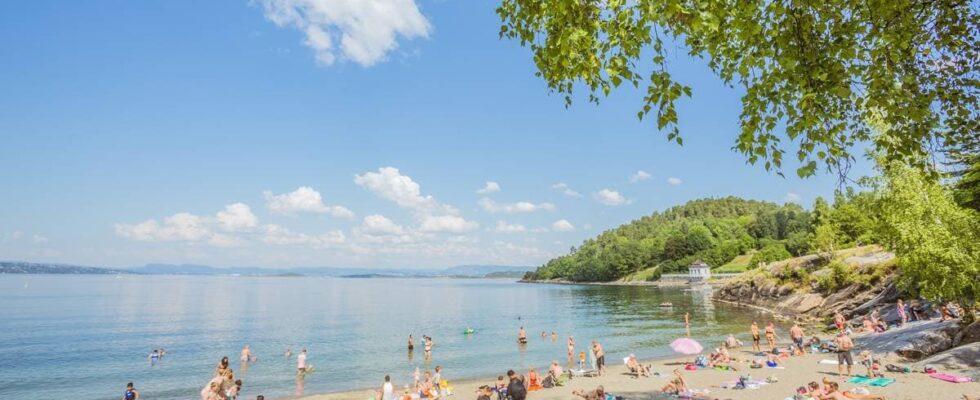Comedian Odd Magnus Williamson recently told the news program “Desken Brenner” that he had to buy mussels at the store when he was fishing for crabs with his daughter. Because there were no living shells left in the sea. This year he expects to have to buy the crabs as well, because there aren’t many of them left in the Oslo Fjord either. Unfortunately, this is closer to reality than we like. In one generation, there are noticeably fewer fish in the fjord. Many of us have fond childhood memories of pulling up cod after cod from the sea in the Oslofjord. Now we find that no cod bites when we take our own children on a fishing trip. Because the fish is not there. In less than a generation, the fish has disappeared. How did we get there and what are we doing? The Oslofjord is one of the very best things about our city. Both Oslo people and visitors are drawn to the fjord, to the islands, beaches and to the boats. The fjord is a sanctuary that is free for everyone, and it is available all year round. But it has been treated as an unlimited resource. Overfishing and sewage dumping have destroyed biodiversity and almost made the cod extinct. Climate change amplifies the problem. The seriousness of the situation may not be obvious when you take a dip or boat trip. The fjord looks so fresh and beautiful on the surface. But large parts of the inner Oslofjord are very low in oxygen. This has major negative consequences for life on the seabed and biological diversity. Nevertheless: the Oslofjord is not dead. Yet. We still have time to save it. There is – as an expectant child crab fishing might have thought – hope in dangling line. Because of the name “Oslofjorden”, it becomes for many a problem that the people of Oslo have to solve. But it is not like that in reality. Just think how big this fjord is. It is so much more than the harbor basin between Nesodden and Rådhuskaia. The rainfall area that drains to the fjord is almost the whole of Eastern Norway. What is released as far north as Røros affects the Oslofjord. Therefore, we must direct our efforts in several areas: Better purification: Oslo has invested a lot in better purification of water from the drain and sewer to reduce the amount of nitrogen in the fjord. The nitrogen suffocates life in the fjord. That is why the Bekkelaget treatment plant has been expanded and the treatment plant of Veas AS, the waste water company we own together with Asker and Bærum, has been heavily upgraded. With population growth and more rainfall, more and more waste water must be cleaned, and requirements for the degree of purification, both for nitrogen and phosphorus, are constantly being tightened. Cooperation: Oslo City Council will take a leading role in the work to save the Oslo Fjord. Through multibillion-dollar investments over the past decade, Oslo and the municipalities in the Inner Oslofjord have greatly reduced nitrogen emissions to this part of the fjord. In the future, more municipalities must build treatment plants with nitrogen removal, and preferably more municipalities in cooperation. Fishing: Overfishing, incorrect taxation and bottom trawling are a major problem for fish and other life in the fjord. When leading marine scientists recommend a cap on cod, through strict protection in permanent zero-fishing areas, we must listen and follow up. Here we need stricter government regulation of fishing in the fjord. Stricter regulation: Increased effort is also required when it comes to runoff from agriculture. Fertilization and autumn plowing must be strictly regulated. Construction in the beach zone increases the pressure on the fjord. That is why we work systematically to open up and make the Oslofjord more accessible. We follow up on illegal buildings and fences. Last, but not least, we have proposed building limits towards the sea. These measures are good, but they are not enough: the work is going too slowly. The effort must be increased. We are concerned that the municipalities, businesses and organizations must contribute to a collaboration – and we must think anew. We are not alone in having these problems with the state of the environment in fjords and coastal areas. In September, there is a kick-off in Oslo City Hall for an EU project with partners from eight countries, of which the Oslo Fjord is one of six cases. Such international cooperation is crucial for developing new knowledge. The search for creativity and new solutions is also the reason why we are now introducing a support scheme for private initiatives to save the Oslo Fjord. By actively facilitating species that naturally belong in the fjord, such as eelgrass and so-called low-trophic species, such as sea urchin, to have better living conditions in the fjord, we ensure the natural cleansing of the fjord. Private and non-profit forces are ready to help with this. Enjoy swimming and boating in and by the Oslofjord this summer. Pick shells and look for crabs. It’s not too late – yet. Published 12.07.2024, at 05.30
ttn-69
Snipe snap snout, is the Oslofjord out? – Speech

